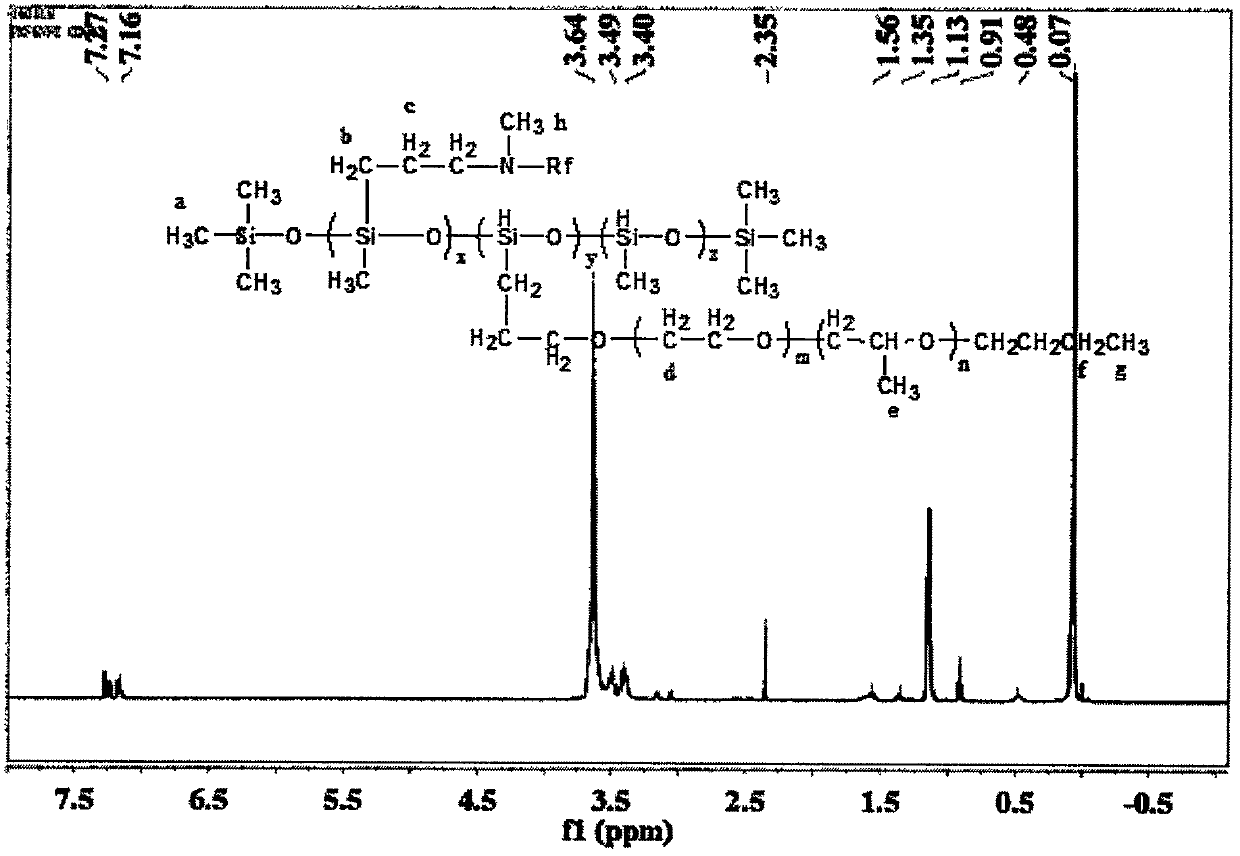Preparation method of fluorosilicone non-ionic surfactant
A non-ionic surface, active agent technology, applied in chemical instruments and methods, transportation and packaging, dissolution, etc., can solve the problem of less fluorosilicon non-ionic surfactants
- Summary
- Abstract
- Description
- Claims
- Application Information
AI Technical Summary
Problems solved by technology
Method used
Image
Examples
Embodiment
[0023] Low hydrogen-containing silicone oil PMHS [2.5g, n(Si-H)=4.95mmol], NF2[1.31g, n(C=C)=2.48mmol], F6[3.62g, n(C=C)=2.48 mmol] and toluene 10mL were added in a 100mL three-necked round-bottomed flask, then a certain amount of Karstedt catalyst with a concentration of 16.1g / L was added, connected with a condensing device, a magnetic stirring device and a thermometer, heated in an oil bath, and after a period of reaction, sampling and analysis Hydrosilylation reaction conversion rate until the conversion rate is substantially constant to end the reaction.
[0024] After the reaction, a yellow transparent solution was obtained, and the toluene was removed by rotary evaporation at 35°C, and then dried in a vacuum oven at 50°C for 4 hours to further remove residual toluene and unreacted volatile components to obtain a yellow Viscous liquid, the synthesis route of PF2F6 is as follows:
[0025]
[0026] characterize
[0027] FT-IR characterization: the purified PF2F6 was pr...
PUM
 Login to View More
Login to View More Abstract
Description
Claims
Application Information
 Login to View More
Login to View More - R&D
- Intellectual Property
- Life Sciences
- Materials
- Tech Scout
- Unparalleled Data Quality
- Higher Quality Content
- 60% Fewer Hallucinations
Browse by: Latest US Patents, China's latest patents, Technical Efficacy Thesaurus, Application Domain, Technology Topic, Popular Technical Reports.
© 2025 PatSnap. All rights reserved.Legal|Privacy policy|Modern Slavery Act Transparency Statement|Sitemap|About US| Contact US: help@patsnap.com



